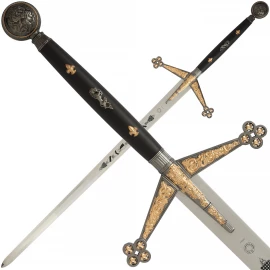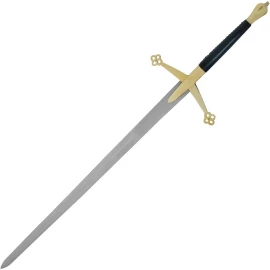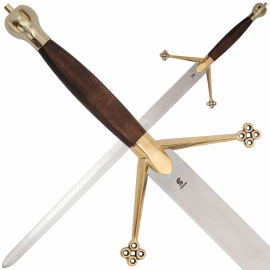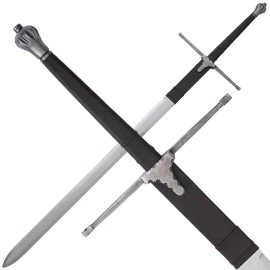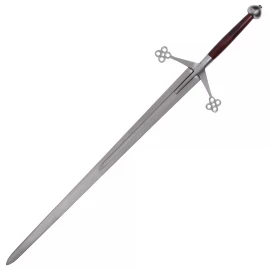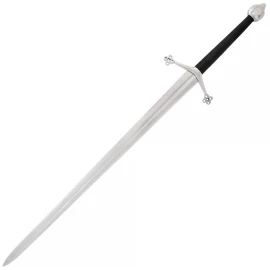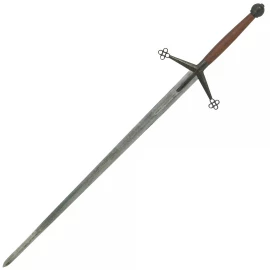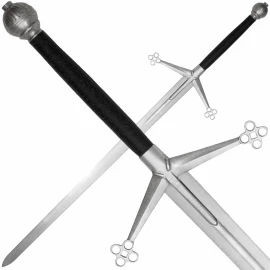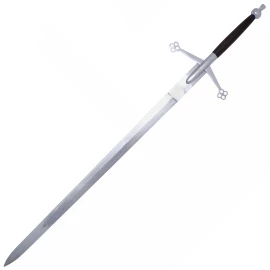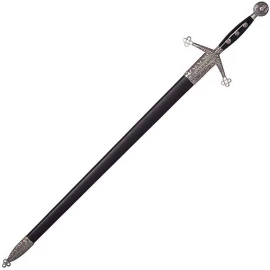Claymore swords
The term claymore refers to one distinct types of Scottish swords: to a two-handed sword with a cross hilt, of which the guards were usually turned down, used by the Highlanders of Scotland. The average claymore ran about 140 cm (55 in) in overall length, with a 33 cm (13 in) grip, 107 cm (42 in) blade, and a weight of approximately 5.5 lb (2.5 kg). Ultimately, the longswords generally descend from the high medieval hand-and-half 'great swords', such as subtype XIIIa, using the Oakeshott typology.
Filter products
Claymore swords
The two-handed claymore was a large sword used in the late Medieval and early modern periods. It was used in the constant clan warfare and border fights with the English from circa 1400 to 1700. The last known battle in which it is considered to have been used in a significant number was the Battle of Killiecrankie in 1689. It was somewhat smaller than other two-handed swords of the era. The two-handed claymore seems to be an offshoot of Early Scottish medieval swords which had developed a distinctive style of a cross-hilt with downsloping arms that ended in spatulate swellings. The spatulate swellings were frequently made in a quatrefoil design.

